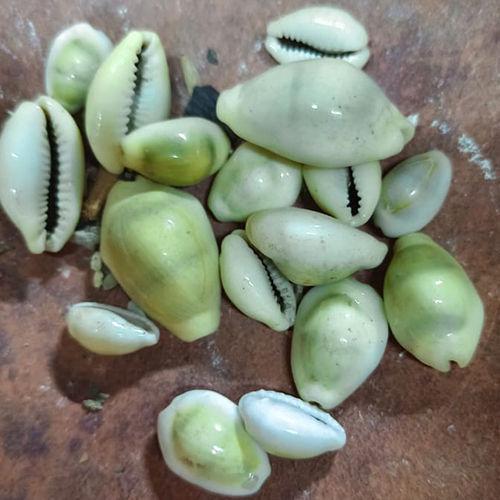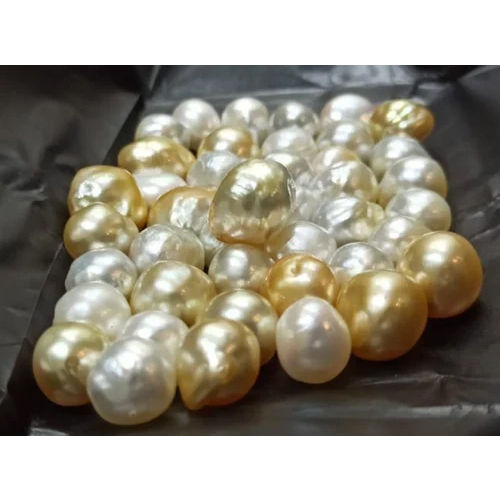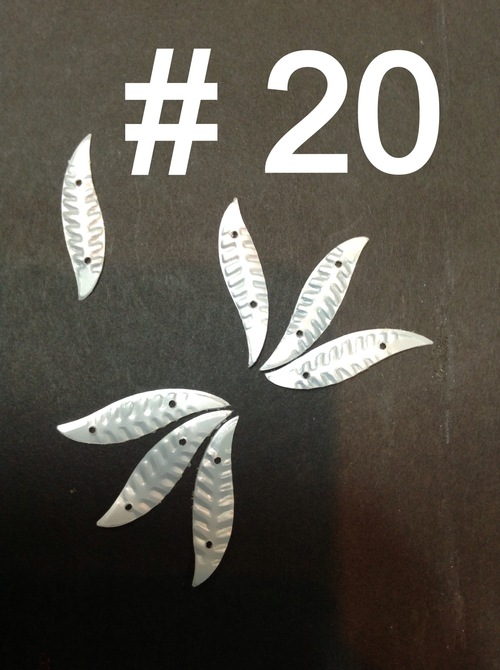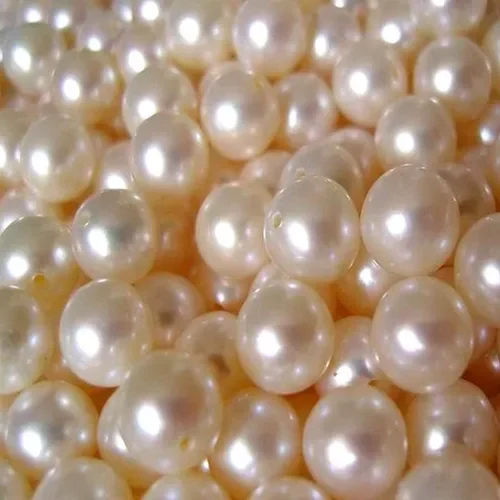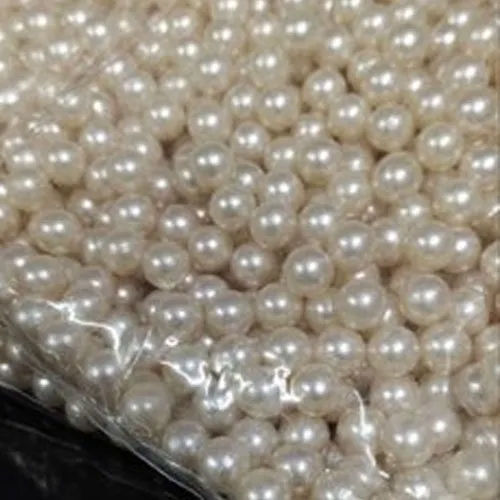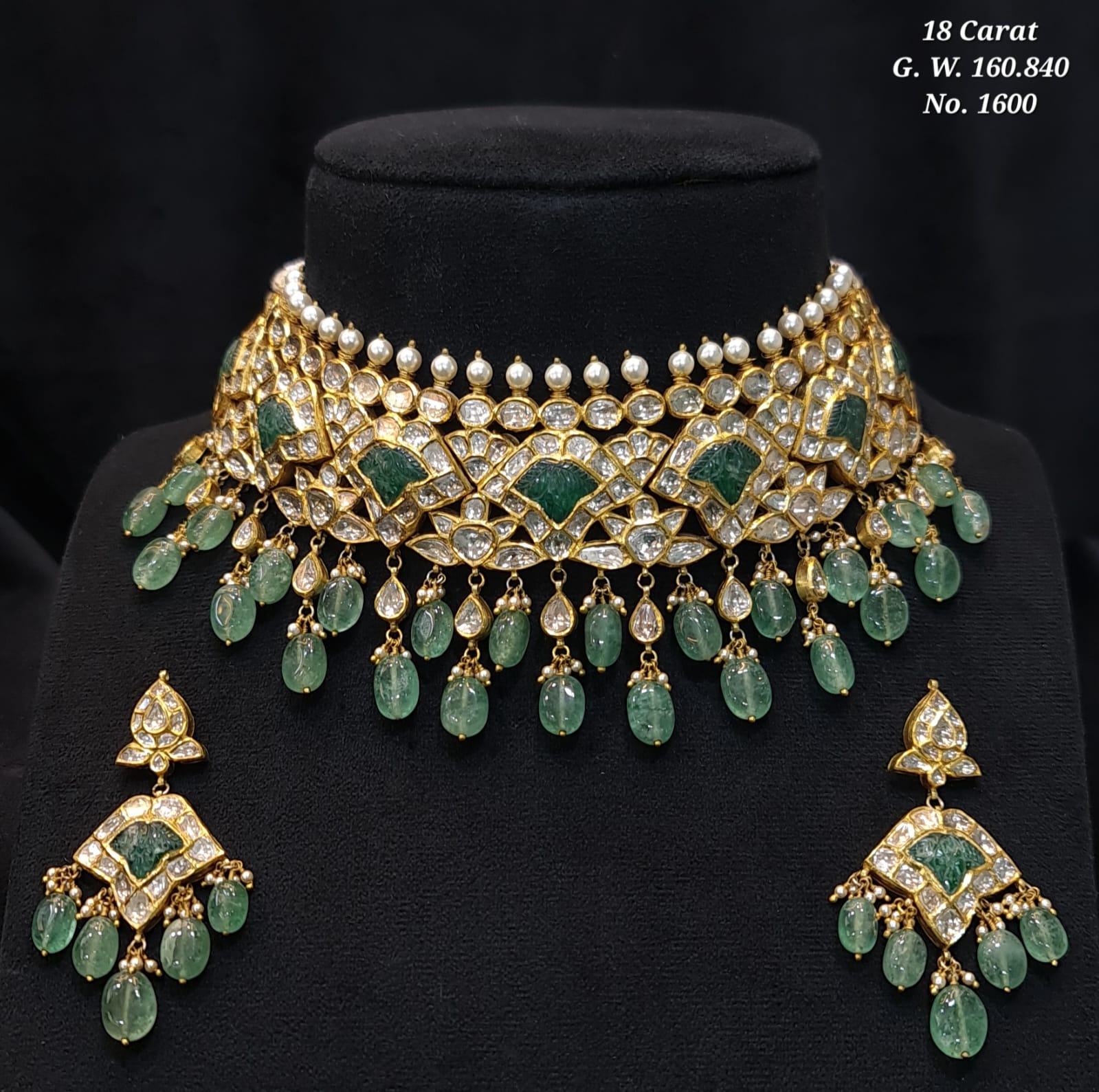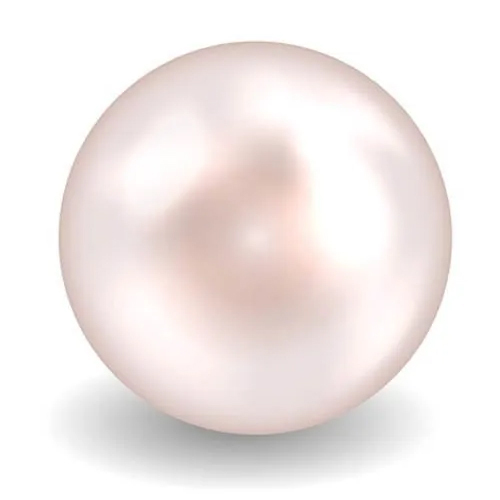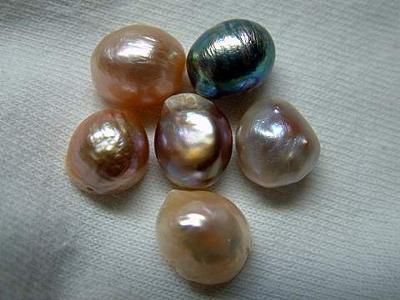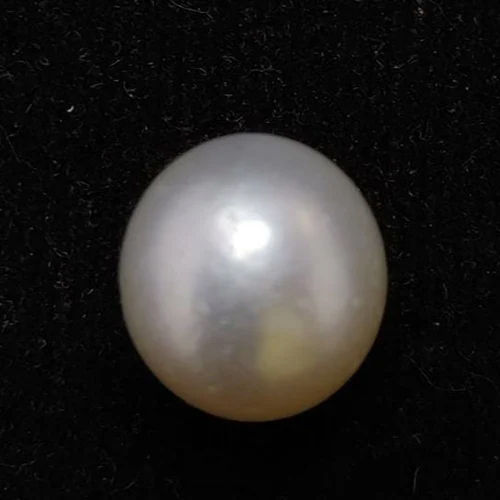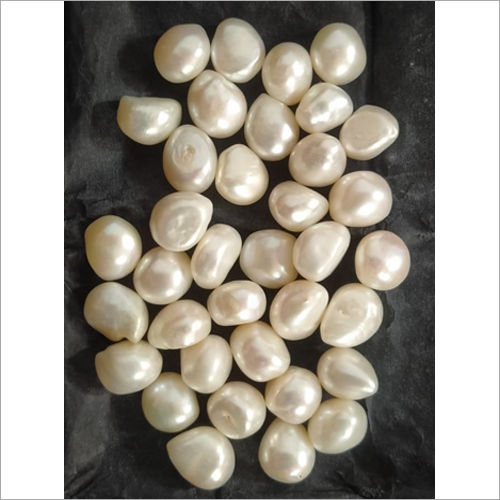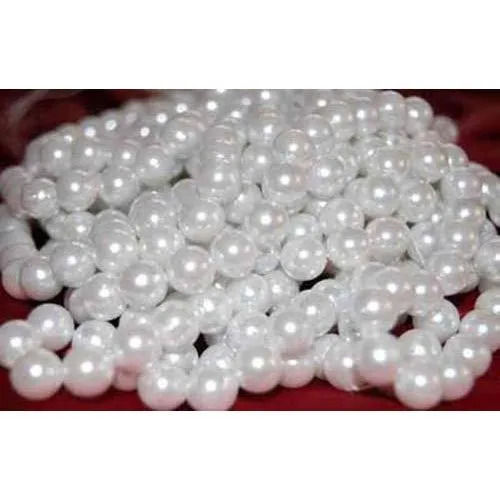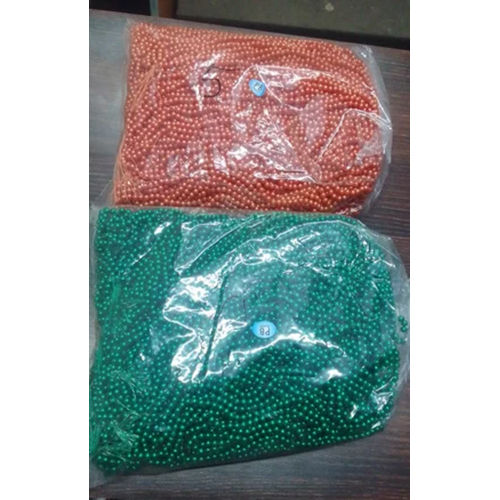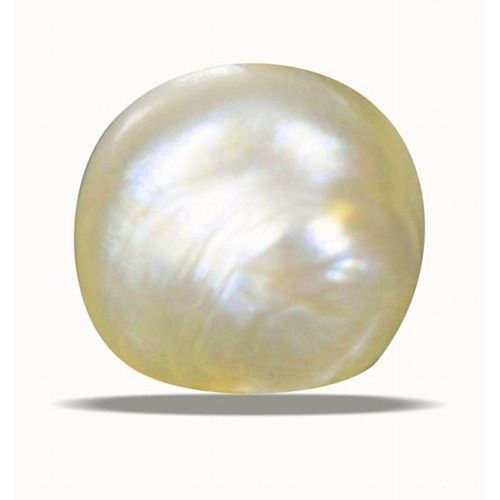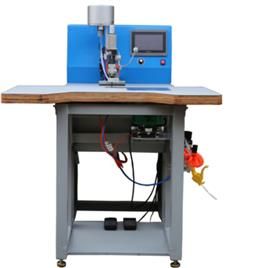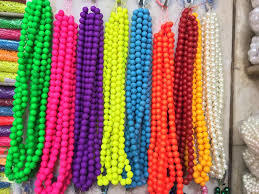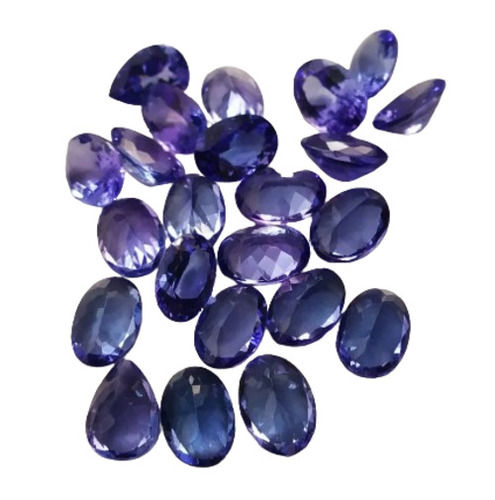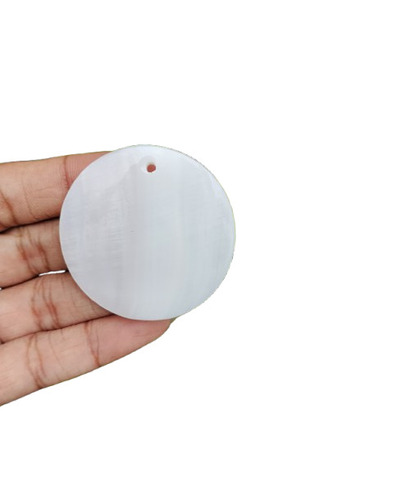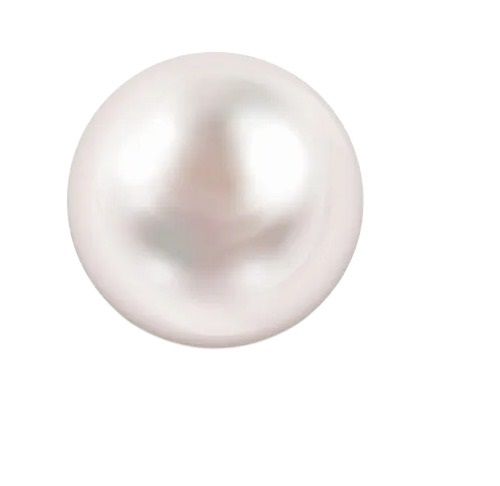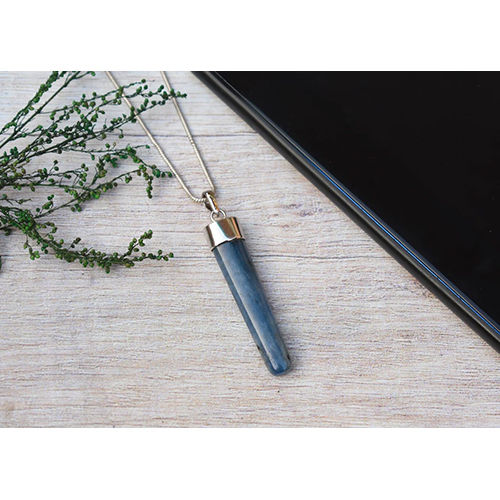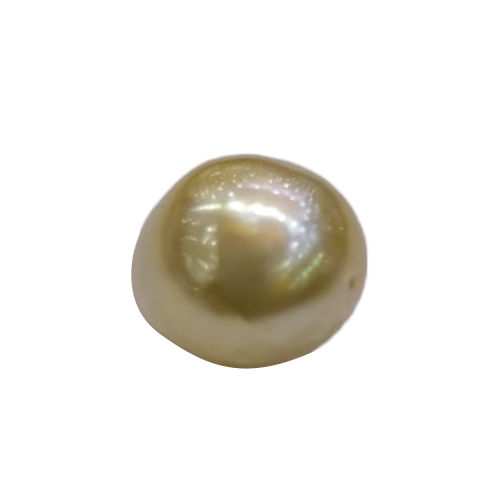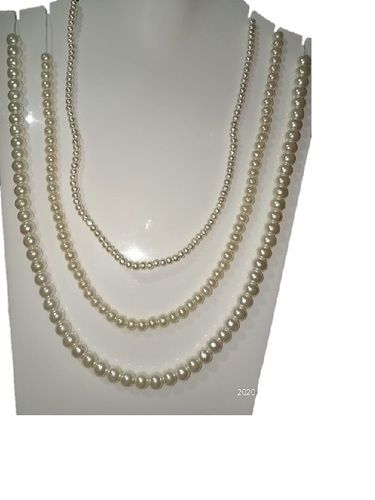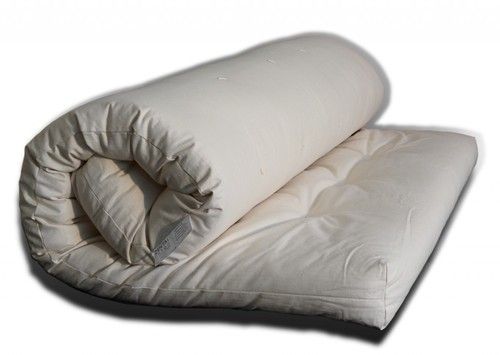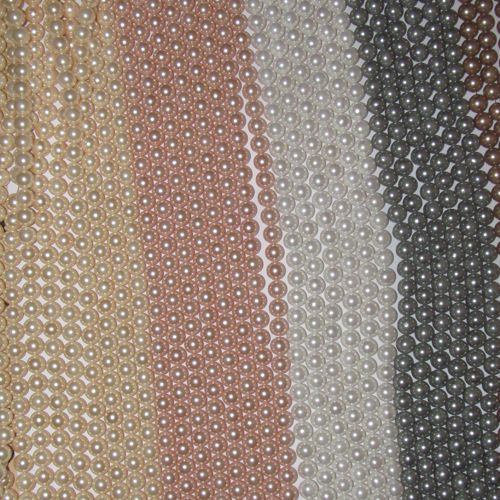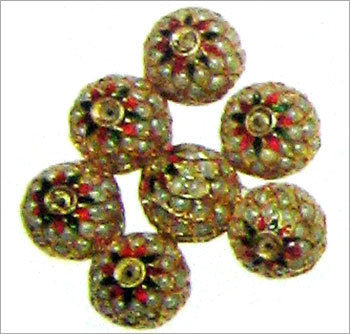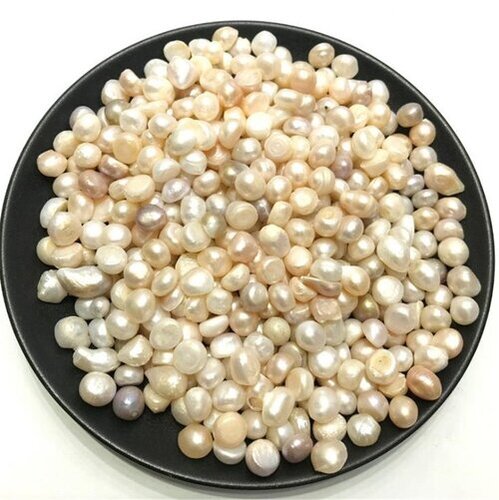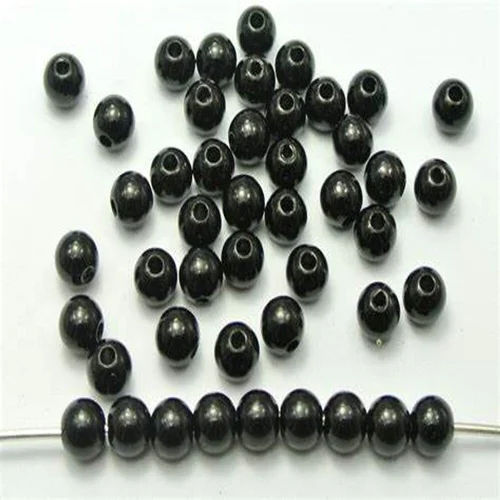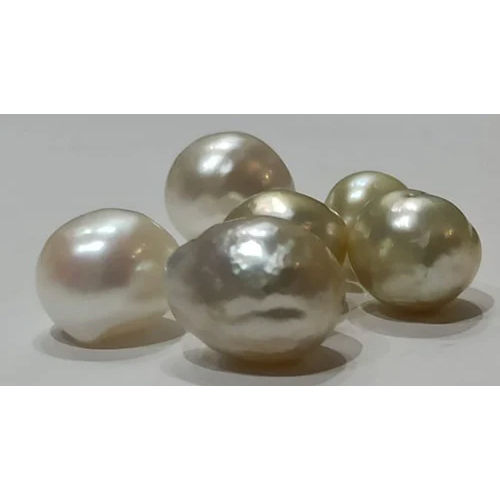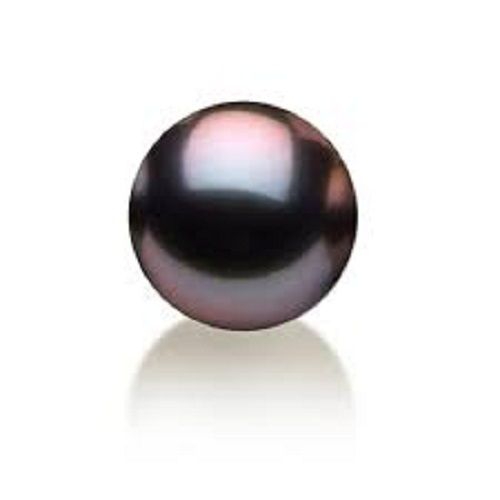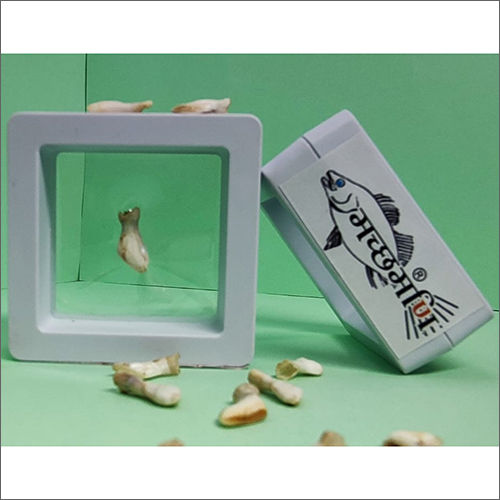Pearls & Natural Pearls
(622 products)Pangem Enterprises & Pangem Testing Laboratory
Pune
Natural Sea Shell - Natural Freshwater Pearls 11-14 mm , Elegant White Color for Jewelry and Home Decor
MOQ100 Kilograms/Kilograms
GradeIndustrial Grade
Pearls TypeNatural
Pearls MaterialFreshwater Pearl
Pearls ColorWhite
Pearls Size11-14 mm
Natural Lapis Lazuli Gemstone Chips
Price: 200.00 INR/Gram
MOQ1 Gram/Grams
Pearls TypeNatural
Bangle Round Pearl Beads
Price: 1500 INR/Carat
MOQ1 Piece/Pieces
Main MaterialPearl
Jewelry TypeEarring, Pendants, Bangle, Ring, Bracelete, Necklace, Chain
ShapeRound
Pearls ColorWhite & Golden
Pearls TypeNatural
Pearls SizeCustomised
Sequins Pearl - Silver Finding, 2m Synthetic Limitation Pearls, Silver Jewelry | Elegant Bracelets, Chains, Earrings, Necklaces, and Pendants
Price: 600 INR/Kilograms
MOQ1 Kilograms/Kilograms
FindingSilver
Main MaterialSilver
Jewelry TypeChain, Bracelete, Earring, Necklace, Pendants
Pearls TypeSynthetic
Pearls MaterialLimitation Pearl
Pearls ColorSilver
White 6Mm Golden Moti
Price: 300 INR/Kilograms
MOQ100 Kilograms/Kilograms
Pearls ColorWhite
FindingGold
ShapeRound
Pearls TypeNatural
Pearls MaterialSeawater Pearl
Pearls Size5mm, 6mm, 8mm
Bapasitaram Enterprise
Surat
 Premium Seller
Premium Seller2 Years
Round Pearl Beads - Occasion: Casual Wear
Price: 175 INR/Kilograms
MOQ100 Kilograms/Kilograms
ShapeRound
OccasionCasual Wear
Pearls TypeNatural
Pearls MaterialOther, Plastic
Pearls ColorWhite
Pearls Size11-14 mm
Rainu Industries
New Delhi
 Trusted Seller
Trusted Seller2 Years
Gold Uncut Polki Choker Necklace - Gold & Diamond Material, White & Gold Color | Luxurious Bridal Design with Matching Earrings, Intricate Details, Statement Piece for Festive Occasions
Price: 560000 INR/Set
MOQ1 Set/Sets
OccasionParty, Wedding, Anniversary
ColorWhite & Gold
MaterialGold & Diamond
Jewelry TypeNecklace
Product TypeGold Uncut Diamond Polki Choker Set
Stone TypeDiamond
Sea Pearl - Hardness: Yes
MOQ10 Unit/Units
HardnessYes
Main MaterialPearl
ShapeRound
Pearls TypeNatural
Pearls MaterialSeawater Pearl
Pearls ColorWhite
Burmies Pearls - Natural Seawater Pearl Jewelry , Elegant Gift for Anniversary, Suitable for Male and Female
Price Trend: 300.00 - 50000.00/Piece
MOQ1 Piece/Pieces
Jewelry Main MaterialNatural Pearl, Pearl
Pearl Material TypeSeawater Pearl
Main StonePearl
OccasionAnniversary, Gift, Other
GenderMale, Female, Boy, Girl
Natural South White Sea Pearl - Jewelry Type: Necklace
Price: 1650 INR/Piece
MOQ10 Carat/Carats
Size8mm
Jewelry TypeEarring, Necklace
ShapeRound
Pearls TypeNatural
Pearls MaterialSeawater Pearl
Pearls ColorWhite
White Burma Pearl Stone
Price: 350 INR/Piece
MOQ1 Piece/Pieces
ShapeOval
Main MaterialPearl
Pearls TypeNatural
Pearls MaterialSeawater Pearl
Pearls ColorWhite
Pearls SizeCustomized
Cream Pure Freshwater Round Polished Finished Pearl Bead For Chain Purpose
Price: 300 INR/Kilograms
MOQ160 Kilograms/Kilograms
Main MaterialPearl
ShapeRound
FindingSilver
Jewelry TypeChain, Necklace
Pearls TypeNatural
Pearls MaterialFreshwater Pearl
Gloden 8 Mm Lightweight Polished Finish Oval Limitation Pearl Bead For Pendants Use
Price: 350 INR/Kilograms
MOQ328 Kilograms/Kilograms
Main MaterialPearl
Jewelry TypePendants
FindingGold
ShapeOval
Pearls TypeSynthetic
Pearls MaterialLimitation Pearl
2 Mm Multi Colored Round Plastic Sequins For Textile Industry, Available In Many Colors
Price: 50 INR/Kilograms
MOQ10 Kilograms/Kilograms
ShapeRound
Pearls ColorMulti colored
Natural White Pearl Necklace - 7.26 Ratti, Elegant Jewelry for Emotional Balance, Mars Influence, Astrological Charm
Price: 700 INR/Carat
Pearls ColorWhite
Main MaterialPearl
Jewelry TypeChain, Ring, Bracelete, Earring, Necklace, Pendants, Bangle
Pearls TypeNatural
Pearls SizeVary
Semi Automatic Pearl Fixing Machine, Minimum Quantity: 1
Product DescriptionSemi Automatic Pearl Fixing Machine
Plastic Pearl Beads
Product DescriptionOur company is instrumental in manufacturing, exporting, distributing, trading and supplying an attractive range of Plastic Pearl Beads in Delhi, India. The offered beads are fabricated using premium quality plastic and colors. Furthermore, the presented beads are extensively used in decorating appa
Tanzanite Gemstone - Pearls Color: Blue
Price: 3500 INR/Carat
MOQ100 Carat/Carats
Jewelry TypeOther
Pearls ColorBlue
Main MaterialOther, Gemstone
ShapeOval
Pearls TypeNatural
Pearls MaterialLimitation Pearl
1.5 Inch - Mother Of Pearl Shell Circle Shape
Price: 39380 INR/Piece
MOQ1 Piece/Pieces
Stone TypePearl
Weight50.00 Grams (g)
Main MaterialPearl
Product Type1.5 INCH - MOTHER OF PEARL SHELL CIRCLE SHAPE
ColorWhite
Pearls ColorWhite
Necklace 20 Mm Synthetic Round Lamination Pearl Stone For Jewelry
Price: 300 INR/Kilograms
MOQ500 Kilograms/Kilograms
ShapeRound
Jewelry TypeNecklace
FindingPlatinum
Main MaterialPearl
Pearls TypeSynthetic
Pearls MaterialLimitation Pearl
Silver High Quality Fashionable Round White Pearl Beads
Price: 1200 INR/Pack
MOQ10 Pack/Packs
ShapeRound
Pearls ColorWhite
Pearls TypeNatural
Black Kyanite Pendant Healing Stone Pendant
Price: 999 INR/Unit
MOQ100 Unit/Units
Jewelry TypePendants
Pearls ColorBlack
Pearls TypeNatural
Pendants Natural Burmese Pearl Gemstone
Price: 660 INR/Carat
MOQ10 Carat/Carats
Jewelry TypeRing, Bracelete, Earring, Necklace, Pendants
FindingPlatinum
ShapeRound
Pearls TypeNatural
Pearls MaterialSeawater Pearl
Pearls ColorGolden
Offwhite Glass Pearl For Making Jewelry Pearls Size: 4Mm
Main MaterialPearl
Jewelry TypeOther
Pearls TypeNatural
Pearls ColorOffwhite
Pearls Size4mm, 6mm, 8mm, 10mm
Form Mattress
Product DescriptionUnder the brand name Royal Mattress Foam Mattresses Leveraging on state of the art infrastructure & advanced technology, we are competent to manufacture and supply an extensive range of Foam Mattresses in Jodhpur, Rajasthan, India. Our customers can avail these mattresses from us as per their specif
Latest From Pearls & Natural Pearls
PEARLS
By:
Raj Kundan Creations
Explore More Cities
Ready To Ship Pearls & Natural Pearls
Know About Pearls & Natural Pearls
Pearls, both modern cultivated pearls and natural pearls, come in a vast array of colours, making them one of the most popular types of gemstones throughout history. White and cream are the hues most people are used to seeing. Although silver, black, and grey are the most prevalent colours for pearls, the colour spectrum for pearls includes every imaginable shade. The primary hue, also known as the body colour, is frequently altered by supplementary colours that are referred to as the overtones. These overtones are typically pink, purple, blue, or green. A phenomenon known as orient can also be seen in the iridescence of certain pearls.
Types of Pearls
Pearls that are cultured can be broken down into two primary categories: freshwater pearls and saltwater pearls. There are subtypes of each of the two varieties that can be differentiated by the method and location of their cultivation. Discover everything there is to know about cultured pearls so you can pick the perfect precious stone for you.
Cultured Freshwater pearls: One type of farmed pearl, can be found in bodies of water such as lakes, ponds, and rivers. Pearls that are created through human intervention are considered cultured, regardless of whether they were grown in saltwater or freshwater. The vast majority of freshwater pearls are cultivated in China, which is why these pearls are sometimes referred to as Chinese freshwater pearls. Pearls obtained from freshwater can be found in a number of pastel colours, although the most common colour is white. They can be found in a wide variety of forms, with the oval, round, and teardrop configurations being the most typical.
Cultured Saltwater Pearls: When a mollusk is implanted inside of a saltwater oyster shell, the process that results in the growth of cultured saltwater pearls takes place in salt water. Pearls obtained from saltwater are grown in a variety of locations across Asia and Australia, including countries and islands. Pearls that were grown in saltwater can be divided into three categories: Akoya pearls, Tahitian pearls, and South Sea pearls. These pearls have diameters ranging from 2mm all the way up to 15mm. They are often white and round, but occasionally they are black or coloured in pastels. Because they take far longer to develop, saltwater pearls often command a higher price point than their freshwater counterparts. Pearls can only be produced by saltwater mollusks one at a time, whereas freshwater oysters can grow anywhere from one to thirty pearls simultaneously. Saltwater pearls, in particular bracelets, earrings, and necklaces, can be fashioned into exquisite pieces of jewelry. Pearl engagement rings are extremely uncommon due to the fact that pearls have a shorter lifespan compared to diamonds and other coloured gemstones.
Cultured South Sea Pearls: The Pinctada maxima oyster, which is used to cultivate South Sea cultured pearls, can be found in Myanmar, Australia, the Philippines, and Indonesia. Cultured pearls come from the South Sea. South Sea pearls are typically spherical in shape and range in size from 8 millimeters to 20 millimeters, making them larger than other farmed pearls. Pearls of this high quality are typically either white or golden in colour, and they have a significant amount of shine. The variety of farmed pearls known as the South Sea pearl is one of the most sought after but also one of the most expensive.
Cultured Tahitian Pearls: Pearls developed in saltwater culture in the islands of French Polynesia are known as Tahitian cultured pearls. The Pinctada margaritifera cumingi oyster is responsible for the growth of these pearls. In their natural state, they are either black or Gray, but many of them also have a secondary colour, such as purple, blue, or green. Pearls from Tahiti can range in size from 8 millimeters to 18 millimeters. The majority of the time, they take the shape of a circle, although they can also be baroque or circular. Pearls from the Tahitian archipelago are known for their iridescence and vivid colouration. The dark tone gives bracelets, necklaces, and earrings the same amount of personality they deserve. Pick the shade and form that best reflects your sense of style and who you are as a person.
Cultured Freshwater Pearls: ponds, lakes, and rivers a mostly in Chinaa are the primary environments in which cultured freshwater pearls are formed. Pearls obtained from freshwater are typically white in colour, although they can also be found in a variety of pastel colours, including gold and pink. The teardrop, round, and oval shapes are the most frequent varieties of freshwater pearls. Because the nacre of freshwater pearls is thicker than that of saltwater pearls, the luster of freshwater pearls is typically lower. Because they are farmed for a shorter amount of time than saltwater pearls, freshwater pearls typically have a lower price tag than their saltwater counterparts. Even today, freshwater pearls retain a great deal of their shine and beauty. In point of fact, a lot of people have trouble telling the difference between pearls that were grown in freshwater and those that were grown in saltwater.
Cultured Akoya Pearls: Pearls of the Akoya culture are the most common type of saltwater pearl and originate predominantly in Japan. However, they can also be found in Australia, Vietnam, Thailand, and China. They can be as large as 11mm, although the majority of them are about 7mm in diameter. Blue, pink, green, grey, and white are some of the colours that Akoya pearls come in. The majority of Akoya pearls are spherical in shape. Pearls from the Akoya culture are prized for their brilliant brightness and classic beauty.
Natural Pearls vs Cultured pearls
Pearls are in natural form without any assistance from humans, whereas cultured pearls are grown in oysters that have had mollusks implanted into their shells by a farmer. The mollusk, which produces natural pearls, is an organism that lives in the water. The mollusk that is used to produce cultivated pearls is typically no larger than a small bead. Natural pearls have a more "organic" appearance than pearls that have been farmed. For example, they could not have as good of a form or be as round as their counterparts that are cultured pearls. Cultured pearls have been grown in a laboratory. Natural pearls are incredibly difficult to find, and the vast majority of them have already been extracted. Because of this, natural pearls are extremely valuable and quite impossible to track down; the vast majority of natural pearls are traded at antique auctions. On the other hand, cultured pearls are not nearly as hard to come by as natural pearls. Pearls seen in practically all jewelry sold in stores today were grown in captivity and are known as cultured pearls.
When an irritant, such as a tiny bead, is introduced into the oyster shell by a pearl farmer, cultured pearls begin to form in freshwater or saltwater. In the same way, as it happens with genuine pearls, the pearl is formed when layers of nacre form around an irritant. Cultured pearls, on the other hand, are distinct from natural pearls due to the involvement of humans in the production process. Natural pearls are extremely uncommon and, as a result, command very high prices at auction. It is quite difficult to find new natural pearls due to the pollution of the water, the presence of marine predators, and the untimely death of the oyster. When shopping for pearl jewelry, though, you will nearly always be looking at cultivated pearls rather than natural ones.
Pearls that have been cultured are a gorgeous type of gemstone that may be grown in either saltwater or freshwater environments. Pearls that are formed in freshwater can be found in ponds, reservoirs, lakes, and rivers. The vast majority of them originate in China. Both Australia and Asia are responsible for the cultivation of saltwater pearls. Pearls that are formed in saltwater can be divided into three primary categories: Akoya pearls, South Sea pearls, and Tahitian pearls. Pearls harvested from saltwater environments are almost always valued higher than freshwater pearls. Circle, drop, baroque, pear, semi-round, round, button, and oval are just some of the forms that can be achieved with cultured pearls. Other shapes include Pearls are most commonly seen in white or black, but they can also be found in a variety of other colours, including silver, pink, and green.
Pearls that are developed in culture are real pearls, and they can be cultivated in either saltwater or freshwater. They develop as a result of the introduction of an irritant into the oyster shell. As soon as the irritant is there, successive layers of nacre will begin to form on top of it in order to form the pearl. A pearl farmer is responsible for overseeing the entire process of cultivating pearls, which includes assisting in the preservation of the animal as well as the development of pearls of superior quality. Even though the process of growing pearls in a culture is not the same as the process by which natural pearls form, both types of pearls are genuine gemstones.
Natural Pearls Price
As of August 2022, natural peals cost somewhere around 15,000 rupees to 50,000 rupees per carat.
FAQs: Natural Pearls
Question: What are real pearls?
Answer: The shine of a genuine pearl is one of a kind, and it has a natural, gritty texture. This is due to the fact that its surface is ridged in a very subtle way.
Question: What are natural pearls?
Answer: The only substance that can be found in natural pearls is nacre, which is made up of an organic binder & aragonite known as conchiolin.
Question: How can you identify a natural pearl?
Answer: Gently rubbing the pearl along your tooth is all that is required. The surface of the pearl will have a grainy feel to it regardless of whether it was cultured or found naturally. In the event that the pearl is a fake, the outer layer will have a smooth texture.
Question: Are natural pearls more expensive than cultured pearls?
Answer: Yes. The price of natural pearls is significantly higher than the price of produced pearls.
Manufacturers & Suppliers of Pearls & Natural Pearls
Company Name | Member Since |
|---|---|
Rainbow Gems Kolkata, India | 21 Years |
Yusufi Stores Mumbai, India | 13 Years |
Pangem Enterprises & Pangem Testing Laboratory Pune, India | 8 Years |
H S R Enterprises Jaipur, India | 5 Years |
Kritika Yash Gems Jaipur, India | 4 Years |
T R Gems Kolkata, India | 3 Years |
Sark Despatchers Choice( (Sdc) Mathura, India | 3 Years |
Basant Traders Kolkata, India | 2 Years |
Bapasitaram Enterprise Surat, India | 2 Years |
Rainu Industries New Delhi, India | 2 Years |
Popular Products



